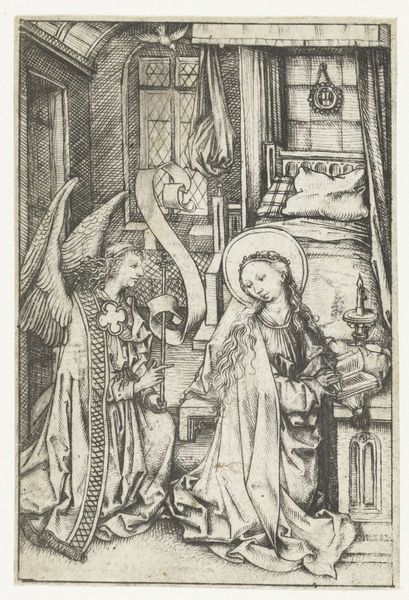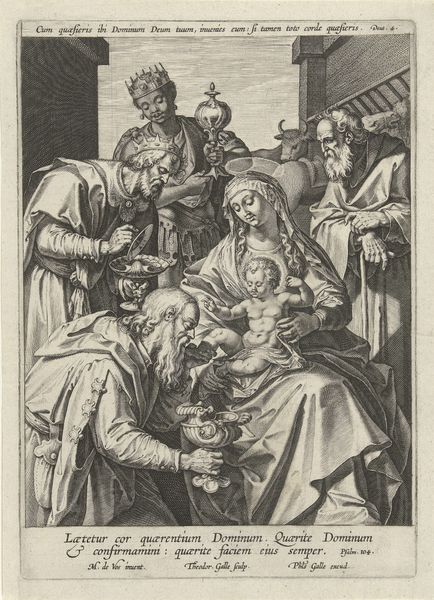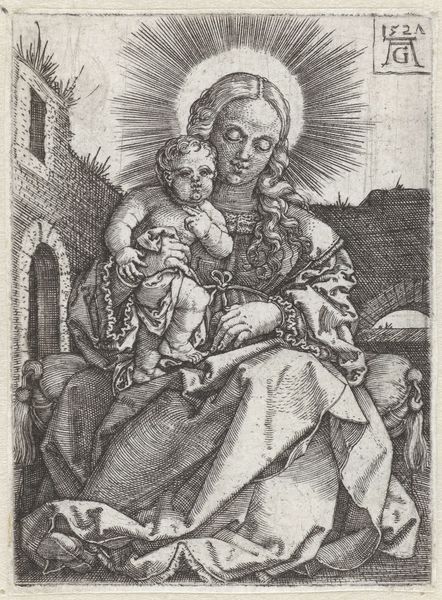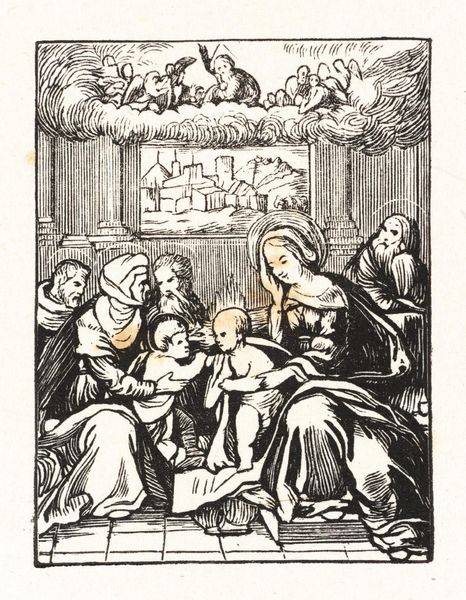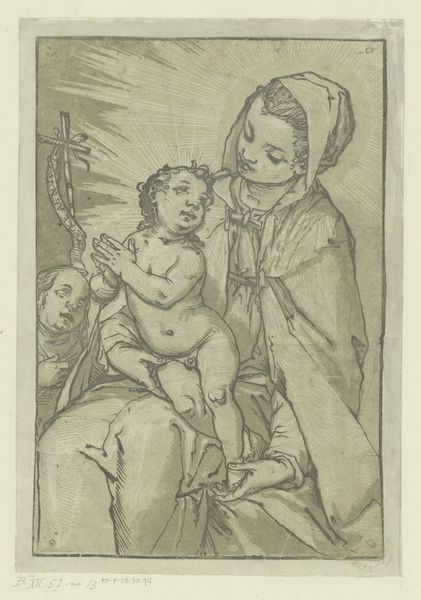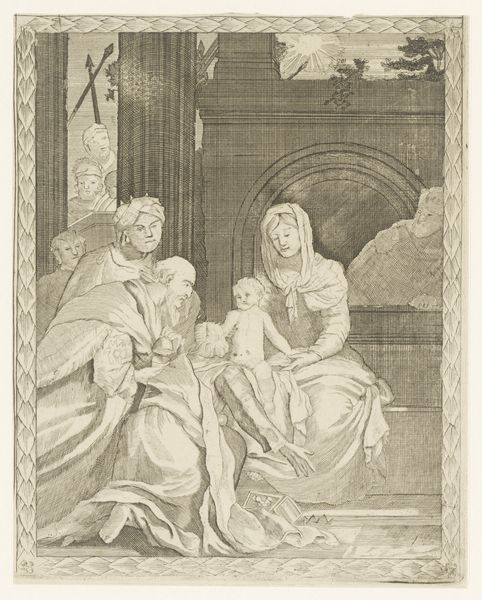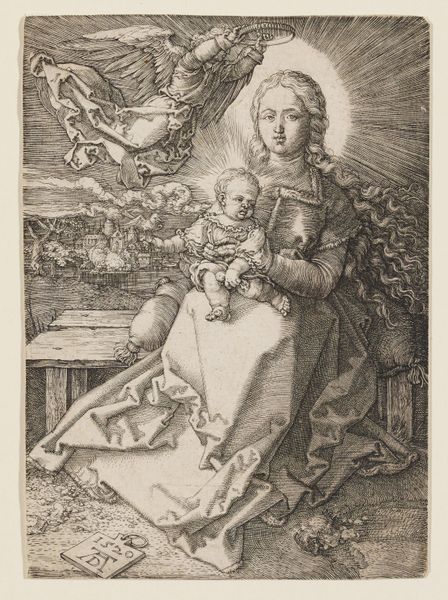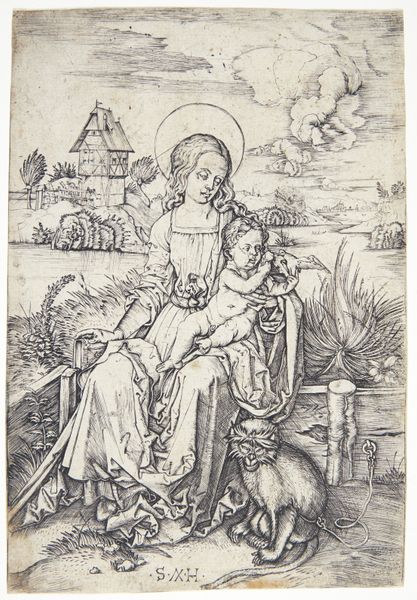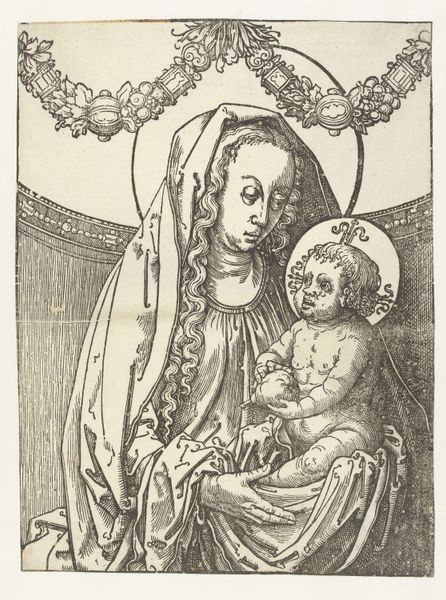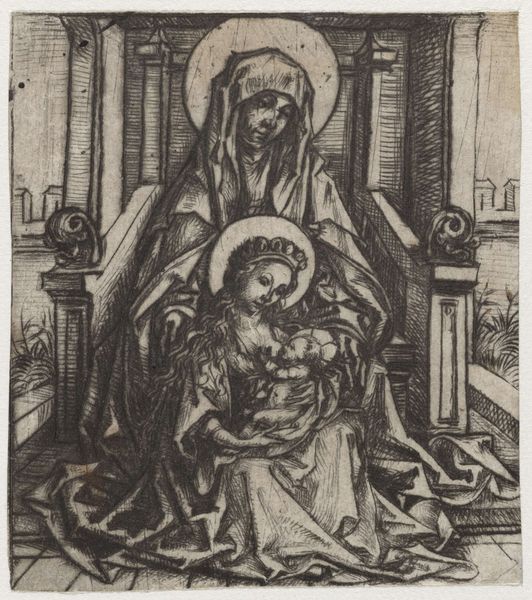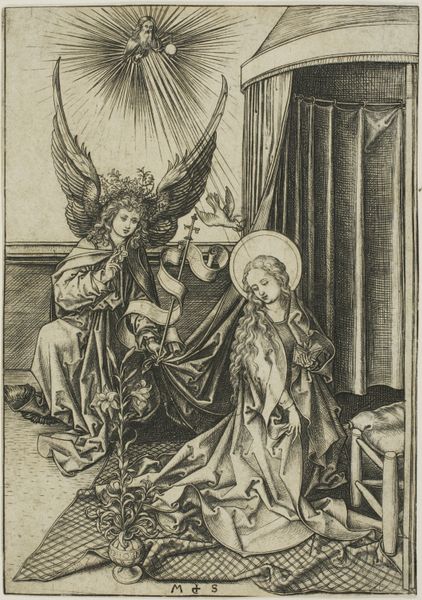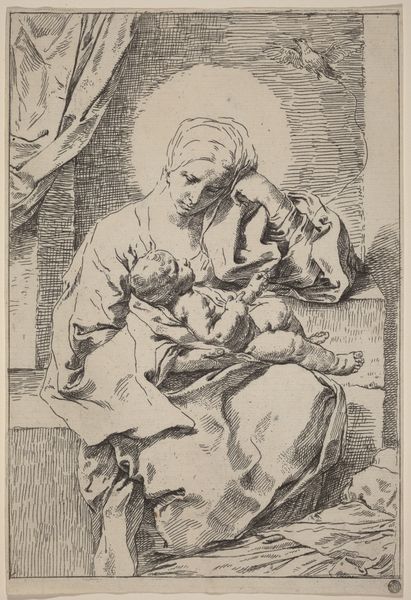
print, engraving
#
portrait
# print
#
pen illustration
#
figuration
#
ink line art
#
line
#
northern-renaissance
#
engraving
Dimensions: height 308 mm, width 255 mm
Copyright: Rijks Museum: Open Domain
Curator: Looking at this, I feel drawn into the silent drama unfolding. Durer’s ‘Anna-te-Drieën,’ made sometime between 1520 and 1530, holds a delicate sort of intimacy. It's currently part of the Rijksmuseum's collection. Editor: It's so linear, isn’t it? I am struck by how every element, from the swirling folds of fabric to the backdrop, seems determined by lines—ink lines, judging from the look of the pen illustration technique. One has to think about the repetitive, demanding work involved. Curator: You're right about the linework; the density and direction surely convey mood and depth, and yet, they are also decorative and almost illustrative in effect. Mary’s gaze is directed at her son, which in turn guides our focus as well; but something about Anna is particularly serene and almost…removed? Editor: The devotional aspect makes me consider production—think about these engravings as commodities meant for broad consumption. How the mass reproducibility using techniques such as etching, woodcuts, or, as in this case, engravings, democratized access to religious imagery. And then, what meanings get lost or altered through this process? Curator: A democratization of spiritual connection, maybe. Still, the work’s impact goes beyond devotional practice. Anna almost hovers like an apparition, as this really seems to me to be an exploration of womanhood through multiple generations. A matriarchal legacy if you will. Editor: The detail feels incredibly refined given its probable status as mass-produced artwork, which must've required considerable investment in skill and access to very specific instruments for mark-making and printing. To add a slight spin on that legacy: does seeing three women pictured this way reinforce or challenge existing patriarchal norms when it's distributed across so many homes? Curator: It probably depends on the viewer then, doesn't it? But one thing is for certain—looking closely reveals a level of sophistication that disrupts assumptions of the time. Each woman, through posture and gaze, seems to claim her own agency within the sacred familial narrative. It's a conversation between three people with distinct roles. Editor: Right. With its fine lines and meticulous production, this isn't just a devotional image—it’s an artifact that testifies to artistic labor, workshop dynamics, and a whole chain of production extending from artist to merchant to pious householder. Thanks for illuminating it. Curator: Thanks for tracing the threads! Hopefully, it helps listeners appreciate its enduring power and visual allure.
Comments
No comments
Be the first to comment and join the conversation on the ultimate creative platform.


